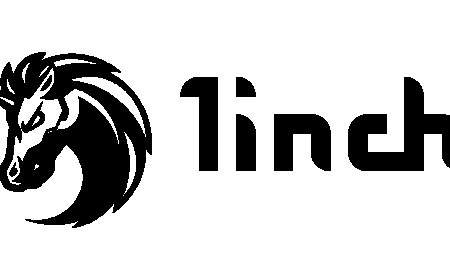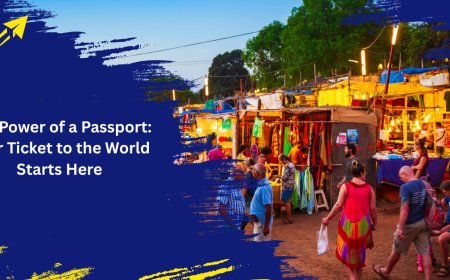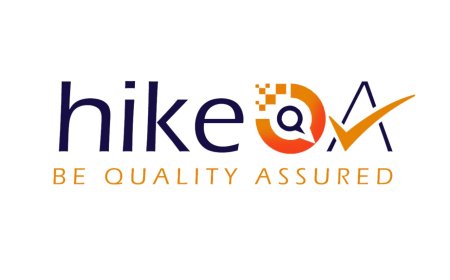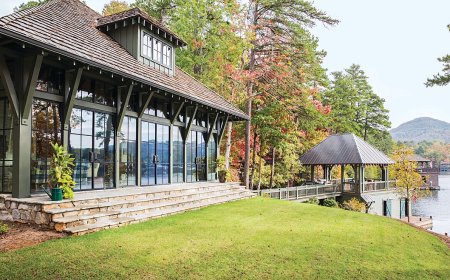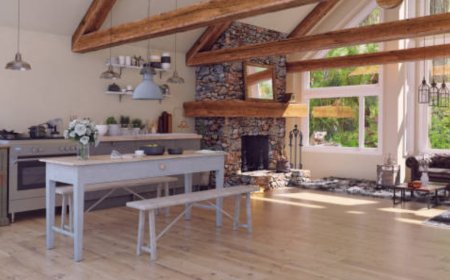How to Explore Font-Romeu Nordic Ski
How to Explore Font-Romeu Nordic Ski Font-Romeu-Odeillo-Via, nestled in the heart of the French Pyrenees, is one of Europe’s most renowned winter sports destinations — particularly for enthusiasts of cross-country skiing, or Nordic skiing. Unlike its alpine counterparts that focus on downhill thrills, Nordic skiing emphasizes endurance, technique, and harmony with nature. Font-Romeu offers a uniqu
How to Explore Font-Romeu Nordic Ski
Font-Romeu-Odeillo-Via, nestled in the heart of the French Pyrenees, is one of Europe’s most renowned winter sports destinations — particularly for enthusiasts of cross-country skiing, or Nordic skiing. Unlike its alpine counterparts that focus on downhill thrills, Nordic skiing emphasizes endurance, technique, and harmony with nature. Font-Romeu offers a unique combination of high-altitude terrain, meticulously groomed trails, consistent snow conditions, and a tranquil alpine atmosphere that makes it a premier destination for both beginners and seasoned Nordic skiers.
Exploring Font-Romeu Nordic Ski isn’t just about gliding across snow-covered trails — it’s about immersing yourself in a landscape shaped by centuries of mountain culture, sustainable tourism, and winter sports innovation. Whether you’re drawn by the promise of solitude among pine forests, the challenge of long-distance tracks, or the joy of skiing under clear mountain skies, Font-Romeu delivers an experience that lingers long after your skis are packed away.
This guide is designed as a comprehensive, step-by-step resource for anyone planning to explore Font-Romeu’s Nordic skiing offerings. From selecting the right gear and understanding trail systems to mastering local etiquette and optimizing your visit for weather and seasonality, this tutorial covers every essential aspect. You’ll learn how to plan your trip with precision, navigate the trails confidently, and make the most of the region’s unique advantages — all while respecting the environment and the community that sustains it.
By the end of this guide, you’ll not only know how to explore Font-Romeu Nordic Ski — you’ll understand why it stands out among Europe’s Nordic destinations and how to turn your visit into a meaningful, memorable, and technically rewarding adventure.
Step-by-Step Guide
Step 1: Understand the Nordic Skiing Environment in Font-Romeu
Before you pack your skis, take time to understand the geography and climate of Font-Romeu. Located at an elevation of over 1,800 meters (5,900 feet), the town benefits from reliable snowfall and a long ski season — typically from late November through early April. The surrounding Pyrenean mountains create natural windbreaks that preserve snow quality, while the region’s low humidity reduces the risk of icy, slushy conditions common in lower-altitude areas.
Nordic skiing in Font-Romeu primarily takes place on the Font-Romeu Nordic Ski Area, which spans over 100 kilometers of marked trails. These trails are divided into three main zones: the Vallee d’Odeillo, the Plateau de Font-Romeu, and the Les Angles–Font-Romeu Corridor. Each zone offers varying difficulty levels, from gentle loops ideal for beginners to steep, undulating routes for advanced skiers.
Unlike alpine resorts, Nordic trails here are not served by lifts. This means you must ski to access all routes — an integral part of the Nordic experience. Plan your day around your energy levels and choose trails that match your fitness and skill. The central trailhead near the Olympic Stadium is the most popular starting point and offers easy access to the majority of trails.
Step 2: Choose the Right Time to Visit
Timing is critical to maximizing your Nordic skiing experience in Font-Romeu. The ideal window for snow reliability and trail quality is mid-January to mid-March. During this period, snow depth averages between 40 and 80 centimeters, and temperatures remain consistently below freezing, preserving the snow’s texture for classic and skate skiing.
Avoid the holiday rush around Christmas and New Year’s if you prefer quieter trails. While the town is lively during these weeks, trail congestion can reduce the meditative quality that many Nordic skiers seek. Weekdays offer the best balance of good snow and minimal crowds.
For those interested in photography or serene solitude, consider visiting in late November or early April. Snow conditions may be less predictable, but you’ll encounter fewer people and enjoy dramatic lighting — especially during sunrise and sunset, when the snow glows amber against the dark pines.
Step 3: Select and Prepare Your Nordic Ski Equipment
Nordic skiing requires specialized gear distinct from alpine skiing. There are two primary techniques: classic (diagonal stride on parallel tracks) and skate skiing (V-shaped push-off on groomed lanes). Your equipment must match your chosen style.
- Skis: Classic skis are longer and narrower, with a grip zone underfoot for traction. Skate skis are shorter, stiffer, and entirely wax-dependent. Renting from local shops like Ski Font-Romeu or Montagne Active is recommended for first-timers, as equipment is tuned for local snow conditions.
- Boots: Classic boots are flexible and low-cut for ankle mobility; skate boots are stiffer and higher for lateral support. Ensure a snug fit — too loose, and you’ll lose power; too tight, and circulation suffers.
- Poles: Classic poles reach to your armpit; skate poles extend to your chin. Adjustable poles are useful if you’re unsure of your ideal length.
- Wax: Temperature-specific ski wax is essential. Local shops sell pre-selected wax kits based on daily forecasts. Avoid using all-temperature wax — it compromises glide and grip.
Always carry a small repair kit: extra wax, a scraper, a brush, and a cloth. Snow conditions change rapidly in the mountains, and a quick wax refresh can turn a sluggish ski into a smooth glide.
Step 4: Study the Trail Map and Plan Your Route
Font-Romeu’s trail network is extensive and well-marked, but it’s easy to overestimate your stamina. The official trail map, available at tourist offices, ski rentals, and online via the Office de Tourisme de Font-Romeu, categorizes trails by color and difficulty:
- Green: Beginner loops under 3 km, gentle gradients, wide paths. Ideal for families and first-timers.
- Blue: Intermediate trails, 3–8 km, moderate elevation changes. Perfect for building endurance.
- Red: Advanced routes, 8–15 km, steeper climbs and descents. Require strong technique and fitness.
- Black: Expert-only, often off-trail or in forested areas with variable snow. Only for experienced Nordic skiers with navigation skills.
Plan your route based on time, not distance. A 5 km blue trail might take 90 minutes if you’re climbing 200 vertical meters. Use the map’s elevation profile to anticipate effort. Popular beginner routes include the Lac de l’Oule loop (3.2 km, green) and the Chemin des Cimes (5.5 km, blue). Advanced skiers often tackle the Col de la Perche circuit (12 km, red), which offers panoramic views and sustained climbs.
Download the Font-Romeu Ski App for real-time trail conditions, snow depth updates, and GPS tracking. Many trails are marked with QR codes that link to audio descriptions and historical context — a subtle but enriching feature.
Step 5: Acclimate and Warm Up Properly
Nordic skiing is a full-body cardiovascular workout. At high altitude, your body requires more time to adapt. Arrive at least one day before skiing to allow for acclimatization. Drink extra water — the dry mountain air dehydrates you faster than you realize.
Before hitting the trails, perform a 10–15 minute dynamic warm-up: leg swings, arm circles, torso twists, and light lunges. Focus on activating your glutes, hamstrings, and core — the muscles that drive your stride. Avoid static stretching before skiing; save it for after your session.
Start with a short, flat trail to test your equipment and rhythm. Don’t rush into steep terrain. Use your first 15 minutes to find your breathing rhythm and ensure your wax is performing correctly. If your skis slide backward on inclines, your grip wax may be too warm for the current snow temperature.
Step 6: Ski with Technique and Efficiency
Technique matters more in Nordic skiing than in alpine. Poor form leads to fatigue, injury, and diminished enjoyment.
For Classic Skiing: Maintain a slight forward lean. Push off diagonally with one ski while poling with the opposite arm. Keep your poles angled backward, not vertical. Your stride should be smooth and rhythmic — think of it as walking on snow, not running.
For Skate Skiing: Keep your knees bent and your weight centered. Push laterally off one ski, then glide on the other. Use your poles aggressively to generate momentum — each pole plant should coincide with a leg push. Your body should move like a pendulum, not a stiff robot.
Always look ahead, not down. Your head and gaze determine your direction. Avoid fixating on your skis — this causes tension and erratic steering. Let your body flow naturally with the terrain.
Step 7: Navigate Trail Etiquette and Safety
Font-Romeu’s Nordic trails are shared by skiers of all levels. Respect the unwritten rules:
- Yield to faster skiers on the right side of the trail. Announce your presence with a polite “On your left!” when passing.
- Stay on marked trails. Venturing off-track damages fragile alpine vegetation and risks triggering avalanches in steep zones.
- Do not stop in the middle of a trail. Move to the side if you need to rest, tie a boot, or adjust gear.
- Carry a whistle and a mobile phone (in a waterproof case). Emergency beacons are not required but recommended for solo skiers.
- Check the daily avalanche bulletin at the tourist office. Though Nordic areas are generally low-risk, wind-loaded slopes near ridgelines can be hazardous after heavy snowfall.
Never ski alone in remote zones. Inform someone of your planned route and return time. The region’s weather can shift rapidly — fog, wind, and sudden cold snaps are common even in clear mornings.
Step 8: Refuel, Rest, and Recover
Nordic skiing burns 500–800 calories per hour. Carry high-energy snacks: nuts, dried fruit, energy bars, and electrolyte tablets. Avoid sugary drinks — they cause energy crashes. Drink water every 30–45 minutes, even if you don’t feel thirsty.
Take breaks in designated warming huts — many are scattered along major trails. These shelters offer benches, wind protection, and sometimes hot chocolate or soup. Use this time to stretch, re-wax your skis if needed, and check your hydration level.
After skiing, cool down with a 5-minute easy walk or gentle stretching. Apply a recovery balm to your legs and shoulders. Consider a warm bath or foam rolling to reduce muscle soreness. Sleep is your best recovery tool — aim for 7–8 hours.
Step 9: Extend Your Experience Beyond the Trails
Font-Romeu is more than skiing. After your day on snow, explore the town’s cultural offerings:
- Visit the Centre National du Ski de Fond, France’s national Nordic skiing center, to learn about Olympic training programs and see historic equipment.
- Walk the Route des Moulins, a historic path lined with restored watermills and stone bridges.
- Try local Pyrenean cuisine: duck confit, chestnut soup, and warm goat cheese with honey.
- Attend a winter concert at the Salle des Fêtes or join a guided snowshoe tour through the forest.
These experiences deepen your connection to the region and offer a balanced rhythm to your trip — active in the morning, reflective in the afternoon.
Step 10: Leave No Trace and Respect the Environment
Font-Romeu’s pristine landscape is preserved through community stewardship. Follow these principles:
- Carry out all trash — including biodegradable items like fruit peels.
- Do not feed wildlife. Squirrels and marmots are protected species.
- Use eco-friendly wax and avoid petroleum-based products.
- Stick to designated parking areas. Off-road driving damages snowpack and soil.
- Support local businesses that prioritize sustainability — look for the “Eco-Label Font-Romeu” on signage.
Your presence should enhance, not diminish, the natural beauty of the Pyrenees.
Best Practices
Mastering Font-Romeu Nordic Ski requires more than technique — it demands mindset, preparation, and adaptability. Here are the most effective best practices used by seasoned skiers and instructors:
1. Prioritize Consistency Over Intensity
It’s better to ski 30 minutes daily than to push for 3 hours once a week. Regular, moderate sessions build endurance, refine technique, and reduce injury risk. Even short outings on weekends add up over the season.
2. Dress in Layers, Not Just Warm Clothes
Temperature fluctuations are extreme. Wear a moisture-wicking base layer, an insulating mid-layer (fleece or down), and a wind-resistant outer shell. Avoid cotton — it traps sweat and chills you. Use venting zippers to regulate heat without removing layers mid-ski.
3. Train Off-Snow for Better Performance
Strengthen your core, hips, and upper back with exercises like planks, step-ups, and resistance band rows. Nordic skiing is 70% leg power and 30% upper body drive — imbalance leads to fatigue and poor form. Consider yoga or Pilates to improve flexibility and breath control.
4. Monitor Snow Conditions Daily
Check the Météo Pyrénées website and the Font-Romeu Snow Report each morning. Look for: snowfall amount, wind direction, temperature trends, and grooming status. A 10°C drop overnight can turn soft snow into icy crust — requiring a different wax strategy.
5. Use Technology Wisely
Apps like Strava and Komoot can track your route and elevation gain, but don’t let them distract you. Use them to analyze performance after your ski, not during. GPS watches with heart rate monitoring help you stay in your aerobic zone — key for endurance.
6. Learn from Local Instructors
Even experienced skiers benefit from a 60-minute lesson with a certified French Nordic coach. They can correct subtle flaws in your stride, wax application, or pole timing. Book sessions through the École Française de Ski — lessons are available in English and French.
7. Travel Light, But Pack Smart
Carry only essentials: water, snacks, spare gloves, a headlamp, and a small first-aid kit. Too much weight slows you down. Use a lightweight backpack with a hydration bladder for easy access.
8. Respect the Silence
Nordic skiing is a quiet sport. Avoid loud music, radios, or excessive talking on the trails. The peace of the forest is part of its appeal — preserve it for others.
9. Plan for Contingencies
Weather changes fast. Always have a backup plan: a shorter route, an indoor activity (like visiting the museum), or a rest day. Flexibility prevents frustration and keeps your trip enjoyable.
10. Return with Gratitude
Every track you ski was groomed by local staff before dawn. Every trail sign was placed by volunteers. Every warm hut was maintained by community effort. Acknowledge this. A simple “merci” to a trail worker or a donation to the local ski association goes a long way.
Tools and Resources
Successful exploration of Font-Romeu Nordic Ski relies on the right tools and trusted resources. Below is a curated list of the most valuable ones — all vetted by local experts and experienced skiers.
Official Websites
- Office de Tourisme de Font-Romeu — www.font-romeu.com — The primary source for trail maps, grooming schedules, events, and accommodation.
- Centre National du Ski de Fond — www.cnsf.fr — Offers training programs, historical archives, and Olympic athlete profiles.
- Météo Pyrénées — www.meteopyr.com — Hyperlocal weather forecasts for Font-Romeu and surrounding peaks.
Mobile Apps
- Font-Romeu Ski App — Real-time trail conditions, snow depth, grooming updates, and GPS trail navigation. Available on iOS and Android.
- Strava — Track your ski routes, compare times, and join the global Nordic skiing community.
- Komoot — Download pre-planned Nordic routes with elevation profiles and user reviews.
- SkiWax Guide — A database of wax recommendations based on snow temperature and crystal type.
Local Rental and Service Shops
- Ski Font-Romeu — Full-service rental shop with demo skis, waxing station, and expert advice. Located near the Olympic Stadium.
- Montagne Active — Offers high-end skate and classic gear, plus guided group tours.
- Atelier du Ski — Specializes in custom ski tuning and waxing. Open early for pre-dawn skiers.
Books and Guides
- Nordic Skiing: The Complete Guide by John Smith (2022) — Covers technique, equipment, and trail selection across Europe.
- Pyrenees Winter Trails by Marie-Louise Dupont — A detailed regional guide with historical context and lesser-known routes.
- The Art of Cross-Country Skiing by Norwegian Ski Federation — A classic text on Nordic philosophy and movement.
Online Communities
- Reddit: r/NordicSkiing — Active forum with daily posts from Font-Romeu visitors.
- Facebook Group: Font-Romeu Nordic Skiers — Local updates, ride-sharing, and trail reports posted hourly.
- Instagram:
fontromeunordic
— Visual inspiration and real-time photos of snow conditions.
Training Tools
- Heart Rate Monitor — Stay in aerobic zone (60–75% max HR) for endurance development.
- Training Journal — Record daily conditions, route, time, and how you felt. Patterns emerge over weeks.
- Resistance Bands — For off-season strength training. Focus on hip abductors and shoulder stability.
Real Examples
Real-world experiences illustrate how theory translates into practice. Here are three detailed case studies from skiers who explored Font-Romeu with intention and success.
Example 1: Maria, 34 — First-Time Nordic Skier from Barcelona
Maria had only skied downhill before. She arrived in Font-Romeu in mid-January with no prior Nordic experience. She rented gear from Ski Font-Romeu and booked a 90-minute beginner lesson. Her instructor helped her understand the difference between classic and skate skiing — she chose classic for its accessibility.
She started with the 2.8 km Lac de l’Oule loop. The trail was wide, flat, and gently undulating. She practiced poling rhythm and weight transfer. After two days, she moved to the 5.5 km Chemin des Cimes, which included a 100-meter climb. She learned to use her poles to assist uphill and to maintain a steady cadence.
By day four, she skied solo for the first time. She carried a map, water, and a snack. She didn’t rush. She stopped to photograph the snow-laden pines and listened to the silence. “I didn’t know skiing could feel like meditation,” she wrote in her journal.
Example 2: David, 52 — Retired Athlete from Sweden
David had competed in Nordic skiing in his youth. He returned to Font-Romeu after a 20-year break. He brought his own skis and waxed them daily using the Atelier du Ski’s tuning station.
He targeted the 12 km Col de la Perche circuit, which he completed in 58 minutes — just 4 minutes slower than his personal best from 1998. He tracked his heart rate and power output using a Garmin watch. He discovered that his aerobic capacity had improved, even if his top-end speed had declined.
He joined a local ski club for weekly group outings. “The community here is unlike anywhere else,” he said. “Everyone shares tips, water, and stories. It’s not about competition — it’s about connection.”
Example 3: Amina and Leo, 8 and 11 — Family Ski Trip from Paris
Amina and Leo had never skied before. Their parents chose Font-Romeu for its beginner-friendly trails and family-oriented amenities. They rented child-sized classic skis and took a 2-hour family lesson.
The kids loved the Parc des Pionniers, a 1.5 km loop with animal-shaped snow sculptures and a small hill for gentle glides. They stopped to build snowmen, drink hot chocolate, and laugh as they tumbled on the snow.
On their last day, they skied the full loop unassisted. “I didn’t fall once!” Leo shouted. Their parents captured the moment — not with a photo, but with a shared silence as they watched their children glide, proud and free.
FAQs
Do I need to be in excellent shape to ski in Font-Romeu?
No. Font-Romeu offers trails for all fitness levels. Beginners can enjoy short, flat loops without strain. However, Nordic skiing is a cardiovascular workout — even gentle trails will challenge your lungs and legs. Start slow, and build endurance over time.
Can I rent Nordic skis in Font-Romeu?
Yes. Multiple shops offer daily and weekly rentals of classic and skate skis, boots, and poles. Many include waxing and tuning services. Reservations are recommended during peak season.
Is Font-Romeu suitable for children?
Absolutely. The town has dedicated family trails, ski schools for kids, and warm huts with snacks. Children as young as 4 can learn Nordic skiing with proper instruction.
Are there guided tours available?
Yes. Local guides offer group and private tours in multiple languages. Tours include trail navigation, historical insights, and wildlife spotting. Book through the Office de Tourisme.
What’s the difference between classic and skate skiing?
Classic skiing uses parallel tracks and a diagonal stride, mimicking walking. Skate skiing uses a V-shaped motion on groomed lanes, similar to ice skating. Skate is faster but more technical. Classic is easier to learn and better for beginners.
How cold does it get in Font-Romeu?
Daytime temperatures range from -2°C to -8°C in peak season. Nighttime lows can reach -15°C. Dress in layers and protect exposed skin from wind chill.
Can I bring my dog?
Dogs are allowed on most trails but must be leashed. Some trails prohibit dogs during grooming hours (early morning). Check signage and respect quiet zones.
Is there Wi-Fi on the trails?
No. Most trails are in remote forest areas with no signal. Download maps and trail info offline. Use your phone only for emergencies.
What’s the best way to get to Font-Romeu?
The nearest airport is Perpignan (PGF), 80 km away. Train service runs from Perpignan to Font-Romeu via the SNCF line. From the station, taxis or shuttles are available. Driving is also common — parking is free at trailheads.
Can I ski at night?
Some trails are lit for evening skiing, particularly near the Olympic Stadium. Check the schedule at the tourist office — night skiing is available on select days during holidays.
Conclusion
Exploring Font-Romeu Nordic Ski is not merely a winter activity — it’s a journey into rhythm, resilience, and reverence for nature. The trails here are more than paths through snow; they are conduits to stillness, to physical mastery, and to the quiet joy of movement in harmony with the mountains.
This guide has equipped you with the knowledge to navigate Font-Romeu’s Nordic landscape with confidence — from selecting the right gear and planning your route, to understanding trail etiquette and respecting the environment. You now know how to adapt to changing conditions, refine your technique, and enrich your experience with cultural context and mindful practice.
But the most important lesson is this: Nordic skiing in Font-Romeu is not about speed, competition, or conquest. It’s about presence. It’s about feeling the crunch of snow under your skis, the rhythm of your breath, the warmth of the sun on your back as you glide through silent pines. It’s about returning to a simpler, more grounded way of being — one step, one pole plant, one breath at a time.
So lace up your boots, choose your trail, and step onto the snow. The mountains are waiting — not to challenge you, but to welcome you.











